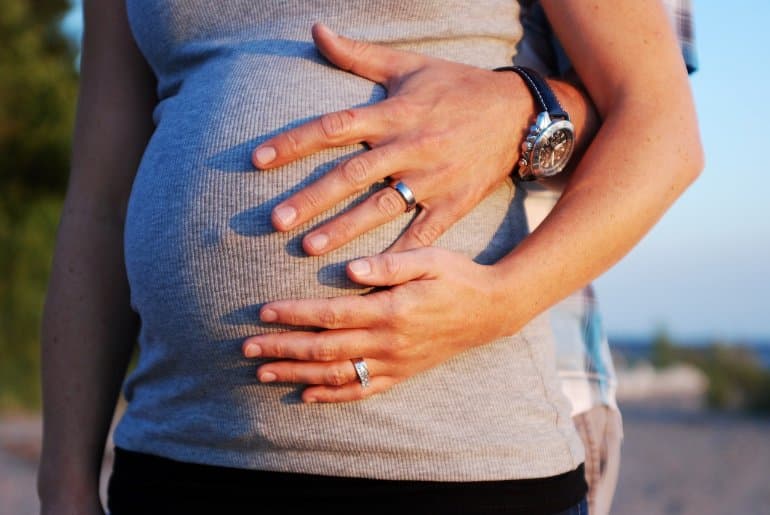Summary: Measuring fetal head growth during pregnancy could help doctors identify which children are at risk of ASD. Researchers found fetuses with narrower heads during mid-gestation are more likely to be diagnosed with autism during childhood. The head development abnormalities appear to be sex-specific, with males and females showing different head shapes. Additionally, the head abnormalities appear to be related to the severity of ASD symptoms.
Source: Ben-Gurion University of the Negev
Researchers at The National Autism Research Center of Israel at Ben-Gurion University of the Negev (BGU) and Soroka University Medical Center have found in utero abnormalities in fetal head growth among children diagnosed with autism spectrum disorder (ASD) in childhood.
The findings on the largest and most comprehensive study of this type to date were published in the journal Child & Adolescent Psychiatry.
“Previous studies have found abnormalities in head growth among children with ASD during childhood, but prenatal studies about this phenomenon had inconclusive results. Our findings suggest that abnormalities in head growth that are associated with ASD begin in mid-gestation and that such crucial diagnostic information can be gleaned from prenatal ultrasounds,” says lead author Prof. Idan Menashe of the BGU Department of Public Health, Faculty of Health Sciences.
The researchers compared prenatal ultrasound data from the second and/or third trimester of 174 children later diagnosed with ASD at the National Autism Research Center of Israel, to the ultrasound data of their unaffected siblings as well as to ultrasound data of typically developed children from the general population.

Three main findings emerged from the study. First, fetuses diagnosed with ASD have narrower heads during mid-gestation compared to the control group, which suggests that fetus growth abnormality is a related ASD trait. Second, ASD-related head growth abnormalities and depend on the sex of the fetus with male and female fetus showing different head shapes during gestation.
Lastly, fetal head anomalies appear to be associated with ASD severity.
“This research is representative of the ongoing collaboration between doctors and researchers at the National Autism Research Center of Israel,” says Dr. Gal Meiri, head of the Pediatric Psychiatry Unit at Soroka and medical director of the Center. “This collaboration provides a strong foundation for in-depth studies based on our database that
enables us to identify risk factors and to characterize ASD sub-types. We hope to be able to personalize care in the future during the diagnosis and perhaps even before an official diagnosis.
The study was conducted by MD/PhD candidate Ohad Regev as part of his doctorate and in collaboration with Gal Cohen, MD Candidate, Dr. Amnon Hadar, MD, Jenny Schuster, BA, MBA, Dr. Hagit Flusser, MD, Dr. Analya Michaelovski, MD, Dr. Gal Meiri, MD, Prof. Ilan Dinstein, PhD, and Prof. Reli Hershkovitch, MD.
Funding: This research was supported by the Israel Science Foundation (Grant no.
527/15).
About this autism research news
Neuroscience News would like to thank Andrew Lavin for submitting this article for inclusion.
Source: Ben-Gurion University of the Negev
Contact: Andrew Lavin – Ben-Gurion University of the Negev
Image: The image is in the public domain
Original Research: Closed access.
“Association Between Abnormal Fetal Head Growth and Autism Spectrum Disorder” by Idan Menashe et al. Child & Adolescent Psychiatry
Abstract
Association Between Abnormal Fetal Head Growth and Autism Spectrum Disorder
Objective
Despite evidence for the prenatal onset of abnormal head growth in children with autism spectrum disorder (ASD), studies on fetal ultrasound data in ASD are limited and controversial.
Method
We conducted a longitudinal matched case−sibling−control study on prenatal ultrasound biometric measures of children with ASD, and 2 control groups: (1) their own typically developed sibling (TDS) and (2) typically developed population (TDP). The cohort comprised 528 children (72.7% male), 174 with ASD, 178 TDS, and 176 TDP.
Results
During the second trimester, ASD and TDS fetuses had significantly smaller biparietal diameter (BPD) than TDP fetuses (adjusted odds ratio [aOR] zBPD = 0.685, 95% CI = 0.527−0.890, and aOR zBPD = 0.587, 95% CI = 0.459−0.751, respectively). However, these differences became statistically indistinguishable in the third trimester. Interestingly, head biometric measures varied by sex, with male fetuses having larger heads than female fetuses within and across groups. A linear mixed-effect model assessing the effects of sex and group assignment on fetal longitudinal head growth indicated faster BPD growth in TDS versus both ASD and TDP in male fetuses (β = 0.084 and β = 0.100 respectively; p < .001) but not in female fetuses, suggesting an ASD–sex interaction in head growth during gestation. Finally, fetal head growth showed conflicting correlations with ASD severity in male and female children across different gestation periods, thus further supporting the sex effect on the association between fetal head growth and ASD.
Conclusion
Our findings suggest that abnormal fetal head growth is a familial trait of ASD, which is modulated by sex and is associated with the severity of the disorder. Thus, it could serve as an early biomarker for ASD.






